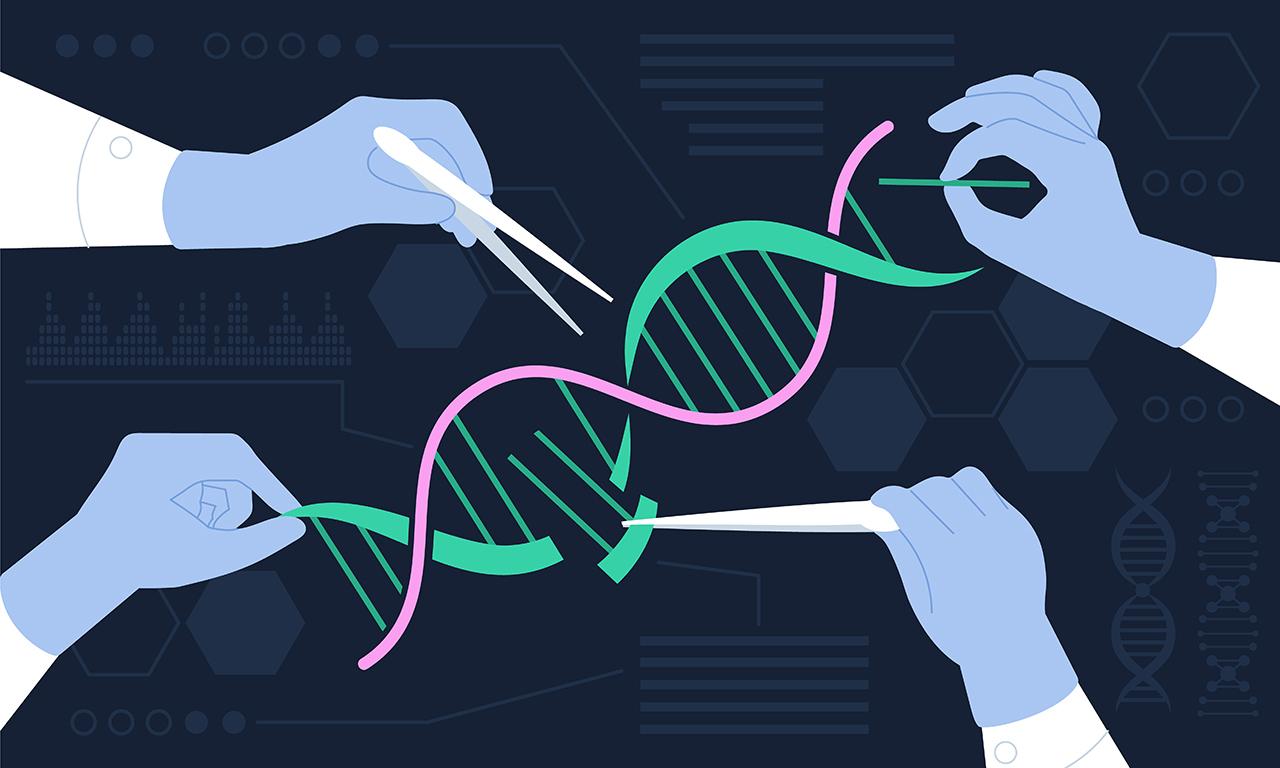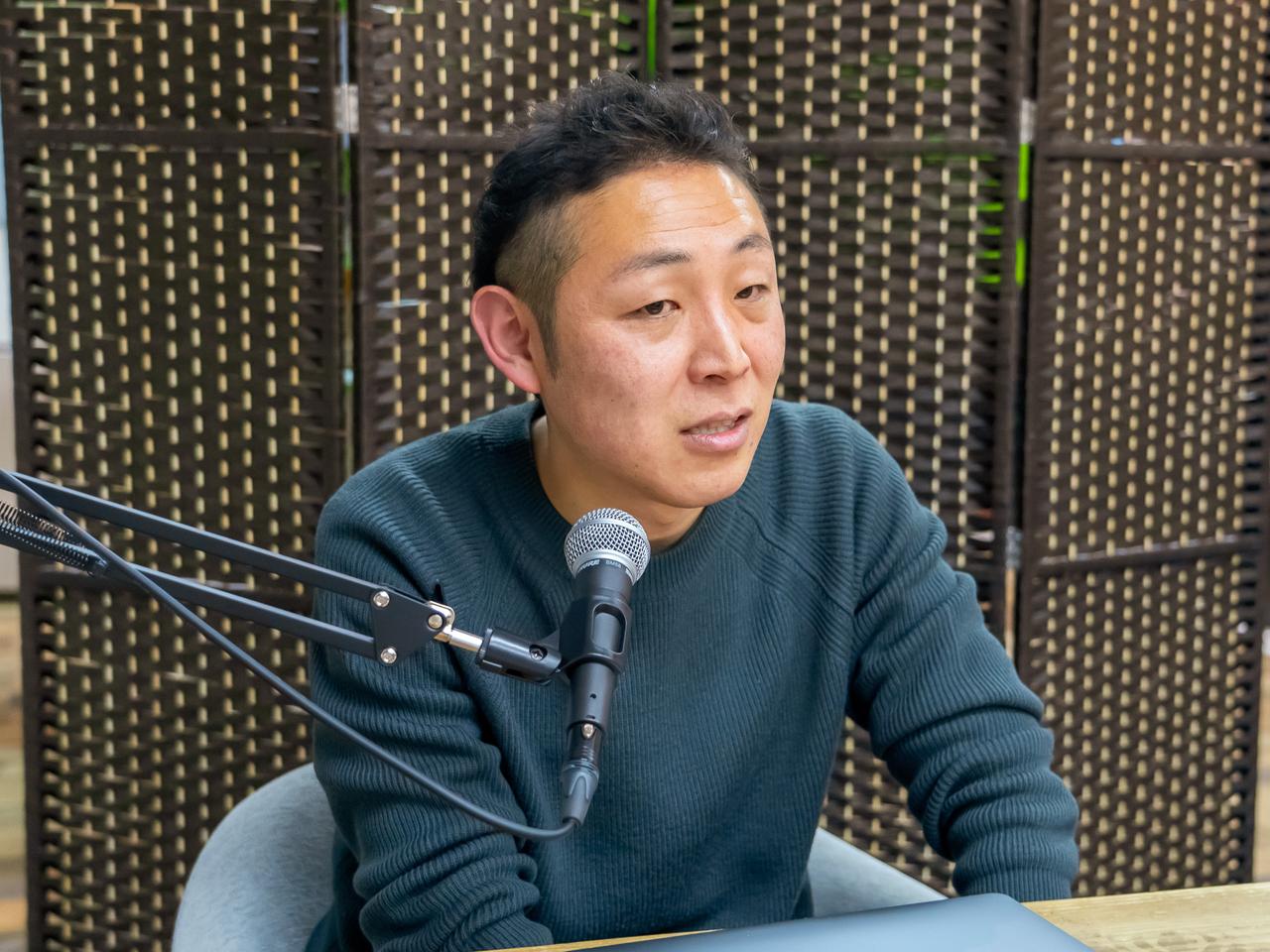「ç§'å¦æŠ€è¡ « 㠮進æ©ã€ ã ¨ã€ŒæŒ ç¶šå ¯èƒ½æ€§ã€ ã ®ä¸¡ç«‹ã‚'目指 ã ™ã€ ãƒ‰ãƒ ã‚¤ã ®æœªæ ¥å šç‰©é¤¨ã ‹ã‚‰è€ƒã ˆã‚‹ä¸–ç•Œã ®æœªæ ¥
「ç§'å¦æŠ€è¡ « 㠮進æ©ã€ ã ¨ã€ŒæŒ ç¶šå ¯èƒ½æ€§ã€ ã ®ä¸¡ç«‹ã‚'目指 ã ™ã€ ãƒ‰ãƒ ã‚¤ã ®æœªæ ¥å šç‰©é¤¨ã ‹ã‚‰è€ƒã ˆã‚‹ä¸–ç•Œã ®æœªæ ¥
電通㠮新データ Cookies ®å¯¾å¿ œã «ã ¤ã „㠦語る
Andriy Onufriyenko/Getty Images
X
Job
DOUBLE
Share
To safeguard
To print
summary:Many business leaders are beginning to believe that in just a few years, powerful generative AI will be able to perform cognitive tasks at the same level as humans. But this is a big misconception. Leaders will coexist with generative AI and humans in ways unknown.…See moreWe must prepare for a changing and uncertain world. This article outlines four steps leaders should take to achieve this goal.close
Recently, I received a call from the CEO of a well-known bank wanting to discuss the future of generative AI (artificial intelligence). It originally worked with the bank on scenarios aimed at improving fraud detection and customer service, but a series of recent announcements make it clear it has even bigger ambitions. Banks, like many industries, have labor problems. There is a gap between the demand for qualified talent and the supply of employees willing to work in an office under pre-pandemic rules.
He believed that generative AI could be a kind of silver bullet. This new tool will enable automation to reduce costs and increase efficiency, but it could also solve the labor shortage problem. Simply put, when will AI replace human workers?
Since November 2022, I have had similar conversations with leaders from various organizations, including insurance companies, manufacturers, and pharmaceuticals. Among them were Hollywood studio executives whose writers and actors were on strike. Every leader wants to know how to create more value with fewer employees. The reason is that in the fall of 2022, the chatbot “Chat GPT” developed by Open AI has rapidly spread, demonstrating the ability of AI to generate emails, papers, recipes, financial reports, articles, ideas, etc. Goldman Sachs predicts that 300 million jobs will be lost or significantly reduced due to generative AI within 10 years.
The turmoil has already begun. Jobs for rapid engineers (those who ask systems like Chat GPT to generate content) offer annual salaries of $300,000 or more. Open AI's GPT-4 has passed the Uniform U.S. Bar Exam, making it appear that lawyers may no longer be needed in corporate legal matters in the near future. In fact, Walmart is currently prototyping a generative AI system (unrelated to open AI) that will be used to negotiate contracts with certain business partners.
Meanwhile, 75% of lawyers and procurement staff involved in contracts said they now prefer to negotiate with AI rather than real people. Google's “Med-PaLM 2” is a special model that has been trained with medical knowledge and currently answers the questions of the medical licensing exam at the specialist level. In summer 2023, a trial is expected to begin that will automatically interpret mammograms and create reports without the intervention of a human doctor.
This incredible pace of development has led many leaders to conclude that within just a few years, powerful AI systems will be able to perform cognitive tasks at the same (or better) level than humans. Business leaders seduced by the promises of AI, worried about attracting and retaining talent and overwhelmed by the recent correction in stock prices and losses lower than analysts' expectations, are now working with fewer employees. as becoming. However, from my point of view, this is a huge mistake.
First, it is too early to accurately predict the future of AI. Generative AI, in particular, is just one area within a larger field that encompasses many interdependencies at different stages of development. This is just speculation about when and what jobs will be taken over by AI. It's not enough for an AI system to perform a task: its results must be proven reliable, integrated into existing workflows, and managed for compliance, risk, and regulation.
Second, in an era of rapid technological disruption, executives focus on short-term profits and don't think much about how their value networks will evolve in the future. As AI evolves, entire parts of the business will need to be restructured, but this will need to be done in real time, without a clear vision of the future. Do you remember? When the Internet and web browsers first appeared, they were seen as nothing more than entertainment. And no one was prepared for the fundamental changes these two changes would bring. It was impossible to predict at the time that the way presidential elections would eventually change and the world's first multi-billion dollar company would come into being.
Indeed, today's leaders must make decisions in the most complex business environment I have experienced since the dawn of the Internet. It's understandable that you want to follow the next wave of technology, but without knowing it, you're putting the future of your business at risk. Here we share steps all leaders can take to prepare for an uncertain world where generative AI and human workers coexist, but evolve in unknown ways.
Paradoxically, workers should recognize that they will evolve alongside generative AI, rather than be replaced by it. Workers must evolve and learn new skills repeatedly. And leaders need to take a different approach to maximize the potential of AI in their organization. The approach is to repeatedly develop a workforce capable of responding to each major advance in AI. Above all, create future scenarios supported by evidence and move beyond old ways of thinking within your organization.
What can leaders do now to survive these times?

(Seminar details)
https://www.ssk21.co.jp/S0000103.php?spage=pt_24002
(Teacher)
Makoto Kawase, representative of MK & Associates
(date and time)
Friday January 12, 2024, 1:00 p.m. – 5:30 p.m.
(How to attend)
■Attendance on site
SSK seminar room
Xymax Building Nishi-Shimbashi 4F, 2-6-2 Nishi-Shimbashi, Minato-ku, Tokyo
■Live broadcast (Zoom webinar)
■Archival streaming (2 weeks, you can watch as many times as you want)
(Key content of the conference)
The “rapidly evolving digital” symbolized by ChatGPT, which has become a hot topic, will fundamentally change manufacturing industries such as machine manufacturing, automobiles and chemicals, as well as service industries such as distribution and finance. This is DX (digital transformation), or “transformation of industrial structure through digitalization”.
Every industry and every society will look very different in 15 years. As existing jobs and industries disappear, new business opportunities will also emerge. A major transformation of industrial structure and society will certainly occur in the next 5 to 15 years. Get an overview of this change and consider the path forward to changing your company's strategy.
In this course, we will use nearly 300 pages of dense and rich materials to give a concrete and comprehensive overview of the technological avant-garde and the future, and decipher the “future”. This course is primarily aimed at executives and members of business planning departments who want to understand and organize the impact of technological advances on their business and propose a new strategy for their business.
(Basic version)
1. The “industrial revolution” called DX has already happened
While Japan was stagnating in the “Lost 30 Years”, the world was going through the “industrial revolution called DX” and almost transformed from an industrial society to a “knowledge society”. However, even today, most Japanese companies view DX as just “IT.” Experiences of success in industrial society do not apply. The key to creating a new future is to abandon the “common sense” of the past and face the new reality.
2.Digital in evolution
Let's understand the basics of digital technology, which is evolving rapidly. We will explain cutting-edge technologies such as AI, generative AI and quantum computers.
3.The future of work styles and organizations: “work” and “organization” will disappear
During the 20th century, many manual jobs, such as agriculture and civil engineering, were replaced by machines. In the 21st century, human intellectual work will increasingly be replaced by machines. What kind of work do people do in what kind of organizations?
(1) “Business” disappears with DX
(2) With DX, “organizations” such as departments and companies disappear.
(Industrial Edition)
4.The future of manufacturing: Japan's strengths will disappear
With the digitalization of products, the electronics industry that supported Japan's prosperity has virtually disappeared from the country.
In the future, digital technology, combined with new technologies such as 3D printing and robotics, will completely change the way we manufacture and transform industries. The “Tesla production system”, which makes full use of digital technology, will prevail over the 20th century Toyota production system.
Waves of change are also hitting the chemical and materials industries.
(1) “Japan, electronic nation” foundered due to digitalization
(2) Digital design and manufacturing will fundamentally change the manufacturing industry
(3) The materials and chemistry industry transformed by AI
5.The future of energy: free energy
The 20th century has been called the “century of oil.” However, the dominant energy source is being replaced by a disruptive technology: natural energy. As the energy that forms the basis of industry changes, so will the structure of the world.
(1) Natural energy plays a leading role
(2) A world of free energy is coming
6.The future of automobiles and mobility: the automobile industry will disappear
The automotive industry is also experiencing major changes like CASE and MaaS. This change will disrupt the existing automotive industry while creating a rich world of mobility.
(1) DX called CASE and MaaS
(2) Automotive industry where engines are disappearing
(3) A thriving mobility society is underway
7.Construction, the future of cities and space: expanding into space
The appearance of homes and offices has changed dramatically due to the coronavirus. Automation in the construction sector is advancing and urbanization is also becoming increasingly intelligent.
We will also explain the future development of the space.
(1) DX in the civil engineering and construction sector
(2) New urban transport and smart cities
(3) The future of space development
(Society Edition)
8.Demographic trends point to the future: a huge market will emerge
Alongside technology, “demographic dynamics” will drive future change. Japan's population, which had increased rapidly for 150 years since the Meiji era, would decline rapidly during the Reiwa era.
On the other hand, population growth in Asia and Africa will promote the emergence of a wealthy middle class and create a huge market.
(1) Can Japanese society resist the reverse population rotation?
(2) Huge and rich markets are emerging in Asia and Africa
9.The essence of a knowledge society: the basic structure of a prosperous future
We will explain the basic structure of a knowledge society in which Generation Z will play a leading role.
(1) Value moves from “things” to “meanings”
(2) The foundations of industry will shift from a production economy to a sharing economy
10.Growth industries in the knowledge society: self-actualization industries and SDG industries
The industries that will thrive in a knowledge society are the “industries of self-actualization” and the “industries of self-transcendence” which satisfy Maslow’s higher-level needs. I will present the content.
(1) Growing “Self-Actualization Industry”
(2) SDG industry is the current growing industry
11. Recommendation: “Imagine, envision and implement” the future.
Digital technology is destroying industries and creating new ones. We'll show you the steps to respond to this change and create new business.
Details will be explained during the “Future Implementation Edition” which will be held on January 19.
12.Questions/answers/exchange of business cards
(Contact details)
New Social System Research Institute
Xymax Building Nishi-Shimbashi 4F, 2-6-2 Nishi-Shimbashi, Minato-ku, Tokyo
Email: info@ssk21.co.jp
TEL: 03-5532-8850
FAX: 03-5532-8851
URL: https://www.ssk21.co.jp
(About the Research Institute for New Social Systems (SSK))
New Social Systems Research Institute (SSK) was established on December 6, 1996, and for more than 27 years since its establishment, our main activity is to provide information services by planning and organizing about 500 training seminars every year. business for businesses.
SSK seminars provide high-level information on management strategy, marketing insights and
Our goal is to quickly provide technological information, etc. and contribute to the creation of commercial opportunities.
Furthermore, we are developing various activities centered on the seminar business.
Seminar planning and management agency services, distribution of trainers, BtoB advertising, studies to order, sale of market research reports, sale of seminar DVDs, sale of seminars on demand, etc.
We provide the information and services necessary for the success and expansion of your business.
SSK always delivers cutting-edge information and continues to be a strategic partner for our customers.
©ã‚¤ãƒ³ODDsæ¤œå®šã€Œæœªæ ¥æŠ€è¡“æŽ¨é€²æ¤œå®š ‹ãƒ¥ãƒ¼ã‚¢ãƒ«ï¼ æœªæ ¥ã ®ç¤¾ä ¼šã‚'イ㠃¡ …
See all images
The jewelry brand “Canal 4℃” has decided to release the “Oshikatsu Jewelry” collection.
The elegantly designed cuff rings will be on sale from today March 22, 2024 (Friday) in “Canal 4℃” stores and official online stores nationwide.
By introducing “Channel 4℃”, you can wear the member colors of your favorite idols or characters and watch live shows or as daily jewelry.cuff ringEast.
Red, pink, purple, yellow, orange, blue, green, white, blackAvailable in 9 colorsA large colorful cubic pattern and a heart have been designed in the center of the popular cuff ring of “Canal 4℃”.
Another interesting feature is that you can have your initials engraved on the heart!
*We offer a free engraving service for first-time purchases only.
*Engraving is only available in store. If you purchased from the official online store, please bring it to the store.
Additionally, as a novelty item, a limited number of “Oshi Bear Charms” that allow you to put your hands together as if praying to win are available.
Limited to those who purchase in store, there will also be a service where you can print your favorite characters and birthday on the ribbon.
【price】
14,300 yen each (tax included)
See all images
“De Beers Forevermark”, which offers high-quality and ethical diamond jewelry, will launch the new “Forevermark Tribute™ Collection” in November 2023. Sales will begin in De Beers Forevermark stores.
At the presentation held before the release, Izumi Mori appeared as a guest, giving a first glimpse of the charm of the new collection. She participated in a discussion session with Alex Pregnolato, President and CEO of De Beers Inc., and said:
“When I choose jewelry, I pay particular attention to quality. I want to use quality items with care and love for a long time.''The slogan of “De Beers Forevermark'' is “A diamond is forever.'' '', we chose it with the desire to pass it on from generation to generation.''
The Forevermark Tribute™ collection includes rings, earrings, bracelets and necklaces in white gold, yellow gold and rose gold. All sparkle with magnificent diamonds that exceed the 4C quality grading standard, synonymous with the De Beers diamond brand, creating a feeling of class.
The new collection focuses on contemporary designs that are easy to style, allowing the wearer to freely express their individuality and style. Diamond jewelry can be worn alone or layered, making women shine on various occasions from day to evening.
Don't forget to check out the “Forevermark Tribute™ Collection”, which is perfect as a holiday gift or treat yourself.
Official website of the brand
DOUBLE
Contact: Forevermark tel. 03-6261-5080
https://www.forevermark.com/ja-jp/
text: MARIE MIYAZAKI
Photography: Yutaro Kobayashi, Grand Green
“Genome editing” was the winning theme of the 2020 Nobel Prize in Chemistry.
This technology has had a huge impact on life science research because it has made it possible to modify the genome, the blueprint of life, cheaply, easily and efficiently compared to previous methods. Its influence now also extends to the industrial side.
Also in Japan, expectations are growing for the application of genome editing to drug development and food areas. Foods made from genome editing have already begun to be commercialized, such as the “Meaty Red Sea Bream” from Regional Fish, a Kyoto University venture capital company, and the “High Accumulation Tomato.” GABA” from Sanatec Seed, a venture capital company of the University of Tsukuba.

Under such circumstances, a new startup that is expected to use genome editing is Grand Green, a startup from Nagoya University. We asked CEO Yuki Niwa about the company's founding story, the difference in its position compared to the two leading genome editing companies, and where it is aiming.
*For more information on the interview, click here.Youtubeand miscellaneousPodcast serviceYou can see it from here.
Before founding Grand Green, Mr. Niwa was a researcher at Kyoto University focusing on basic research. However, Niwa himself did not always have the goal of becoming a researcher.
“Since I was a child, I have dreamed of creating value in the world of agriculture and biotechnology.”
That was the starting point.
When Niwa was a high school student, gene-editing technology was just becoming a hot topic.
“Science and technology could solve various food-related problems.”
Mr. Niwa, who admired this, entered an agricultural high school. Subsequently, he entered Kyoto University to engage in research. However, there were obstacles to realizing his vision of “creating value for the world through science and technology”.
At the time, genetically modified foods remained socially unacceptable due to consumer concerns.
“I realized this late. So at that time I thought that by deepening scientific knowledge, people in the future could use it in a way that would be useful in the world, so I started researching basic biology.・I decided to do research in the field of botany.
Niwa had just begun his research career, but when he obtained his doctorate, he found himself faced with a major turning point. Genome editing technology using CRISPR/CAS9, which would later win the Nobel Prize in Chemistry, was introduced.

Image of genome editing. Genome editing was the subject of the Nobel Prize in Chemistry in 2020.
MicrovOne/Getty Images
Unlike genetic recombination technology, genome editing promotes breed improvement through mechanisms found in nature.
“I think this technology has a very promising future in terms of what I wanted to do initially, which was to use the knowledge of biotechnology in the world.”
He felt it had great potential.
However, genome editing, considered a cheap, simple and effective way to modify genes, has its challenges.
Since the “tools” and “conditions” required for genome editing differ depending on the crop or variety, it has been difficult to use it universally in agricultural breeding.
“I felt like the technology to apply genome editing to diverse crops was not mature enough. I was aware of this problem and had experienced it myself in the field, so I thought it was something I should work on.”
Mr. Niwa decided to create the company to transform genome editing into a versatile and easy-to-use technology in the field. We decided to launch Grand Green with researchers from Nagoya University.

Photography: Yutaro Kobayashi
Grand Green is developing general-purpose breeding technology that uses genome editing.
There are several ways to use genome editing to improve breeds, but Niwa says the most common method is to create a clump of undifferentiated cells called callus from a culture that can grow into leaves and stems, and to inject the genome into this cluster. about sending editing tools.
Even if we send a genome editing tool to a mass of cells,In reality, only a few tens of percent of cells are genetically modified.As a result, callus grows as a “chimera-like” individual, a mixture of “genome-edited cells” and “non-genome-edited cells.”
The seeds obtained from this process include a certain proportion of genetically modified seeds and non-genetically modified seeds. By growing these seeds, selecting individuals that have the desired characteristics (successful genome editing) and crossing them repeatedly, it is possible to create new varieties.
The ease of creating calluses, the optimal delivery method for genome editing tools, the efficiency of gene editing through genome editing, the ease of regeneration from calluses… The techniques used in each process and their success rates vary greatly depending on the crop and variety, and Niwa says: “It would take years to go through trial and error each time. »

How cells are grown.
Image: Big Green
Grand Green is attentive to this issue.
“Which part of a plant regenerates depends on biological processes.
We are therefore trying to establish a method that can be applied to a wide range of crops and varieties by preparing “cells in an easy-to-regenerate state” and optimizing the genome editing method used for these cells, which is different conventional calluses.
As a first example of using this technology, Grand Green aims to commercialize a new tomato variety. They are trying to modify the genome of a tomato variety that originally contains a lot of lycopene to give it the characteristics of high sugar content and high yield.

High sugar tomatoes developed by Grand Green.
Image: Big Green
Genome editing is a technology that precisely modifies specific genes. However, in order to create “amazing” varieties, it is essential that the plants before modification are good varieties.
Furthermore, a problem specific to agribusiness is the difficulty of selection, which takes years. Even if you are able to develop a good strain in-house, the time frame between when sales begin and when it becomes popular with the public is long, making it difficult to monetize in the short term.
Grand Green's business pillar is “joint development projects” and the company has formed partnerships with more than 10 companies in various sectors, including seed and seed manufacturers, food manufacturers, agriculture and environmental companies. We collaborate on the research and development of new varieties from the idea generation phase, and 25 products are already in development.

Cat Jupiter
The range of applications is not limited to food crops.
The joint research with Revo International, known for developing biofuels, aims to produce plant-derived biofuels.
“They grow a plant called Jatropha, which is used as a feedstock for biofuel (oil), in Vietnam, and we are working together to improve varieties that will produce more oil.”
As we move forward with the social implementation of genome editing technology, the major question is how to address consumer concerns.
Niwa said: “The difference between genetic recombination and genome editing is not widely understood, so I think people are cautious about it. ” He points out that in the current situation, even if we do our best to explain genome editing itself, the end result will be a debate about whether it is a safe crop.
“Ultimately, we want everyone to have something in their hands in the form of a variety. I think it depends on their willingness to give shape to the technology (genome editing) and eat the food that has been created.”
Genome editing is just one tool for creating better varieties.
“I think varieties are like human treasures. »
We try to create new “treasures” by collaborating with various technologies and partners.

*This article was partially edited from Business Insider Japan's video podcast program “DeepTech Institute.” If you would like to watch the entire episode, please use various podcast services or YouTube.
“I don’t wear jewelry. I wear art” series. The 21st edition is Van Cleef & Arpels, which repeats tradition and innovation.
Needless to say, one of the five largest jewelers in the world. Founded in Paris in 1906. While producing various collections, the “Perle Collection” was created in 2008.
It features a delicate golden bead design. The appearance of a series of small grains is simple but shows a wide variety of expressions. Depending on the material and the combination with gemstones, gold beads can look stunning or dazzling.
On her wrist were rings and bracelets in yellow gold, rose gold and diamonds, and white gold and diamonds. No matter how many layers you wear, it will make you look stylish and dignified.

“The Boutique Collection” was announced in 1950. Its proposal to incorporate adorable animal figures into jewelry was a hot topic at the time. This sense of playfulness is now reflected in the “Lucky Animals Collection”, with the chest clip representing an elephant.
Crafted in 18k yellow gold with beaded edges, the watch is decorated with stunning green malachite, white mother of pearl and onyx eyes.
Alongside these collections, the Zodiac collection perpetuates the tradition of the House. Since the 1950s, the theme of the 12 constellations has been expressed through medals and charms. The Sagittarius motif engraved on the 18-carat yellow gold medal will certainly serve as a talisman.

■What is the series “I don't wear jewelry. I wear art”…
Sometimes as fashion, sometimes as a symbol, sometimes as art… There are many different reasons to wear jewelry. However, each of them is an expression of one's identity, and the days we acquire them are, in other words, the imprints of our life. Presentation of such precious jewelry.
↑Return to top of page